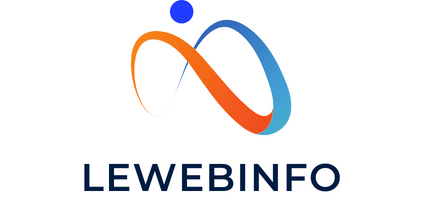What’s the Latest in Low-Impact Training for Rehabilitation of Knee Injuries in Skiers?

When it comes to skiing injuries, one of the most common and debilitating areas affected is the knee. The high-speed nature of the sport, the sudden turns, and jumps, all contribute to a significant number of knee injuries each year. Rehabilitation for these injuries is often a long and challenging process. It requires a dedicated, multifaceted approach to ensure a full return to skiing ability. Fortunately, the realm of low-impact training has seen some exciting developments recently, offering new avenues for rehabilitation.
The following sections will delve into the latest advancements in low-impact training for rehabilitation of knee injuries in skiers. By the end, you’ll have a comprehensive understanding of what these developments mean for injury recovery and return-to-sport timescales.
A découvrir également : How Can Augmented Reality Coaches Improve Technique in Olympic Weightlifting?
Incorporation of Aquatic Therapy
A significant trend in rehabilitation training is the increased use of aquatic therapy. This kind of exercise uses the resistance and buoyancy of water to exercise injured muscles and joints without placing undue stress on them.
Aquatic therapy provides an excellent low-impact environment for knee-injury rehabilitation. The natural buoyancy of water reduces the weight placed on the injured knee, allowing for gentle strengthening of the surrounding muscles. Water also provides even, multi-directional resistance that aids in improving joint flexibility and muscle tone.
Dans le meme genre : How Can Sensory Deprivation Tanks Be Used in Recovery Protocols for Mixed Martial Artists?
New advancements in this area include the use of underwater treadmills and resistance devices. These tools allow for controlled, resistance-based exercise, providing a more challenging workout without increasing impact on the knee.
Use of Virtual Reality
Another exciting development in low-impact knee rehabilitation is the use of virtual reality (VR) technology. VR offers the opportunity to simulate skiing movements in a controlled, low-impact environment, allowing for effective retraining of the knee without the risks associated with actual skiing.
Recent studies have shown the effectiveness of VR in improving balance, proprioception, and neuromuscular control in individuals recovering from knee injuries. By creating a realistic, immersive environment, VR enables patients to perform a range of skiing-related exercises that engage the same muscle groups as the real activity.
Integration of Pilates
The integration of Pilates in rehabilitation programs is another significant development in low-impact knee rehabilitation. This exercise form emphasizes the strengthening of the core and improvement of overall body alignment, which can be particularly beneficial for skiers, who rely heavily on these elements.
Pilates exercises focused on the lower body can help retrain and strengthen the muscles surrounding the knee, improving stability and reducing the risk of re-injury. Additionally, Pilates can be adapted to suit the individual’s needs and capabilities, making it a versatile tool in the rehabilitation process.
The Role of Nutrition
While it may not be the first thing that comes to mind when considering low-impact training, nutrition plays an essential role in the recovery process. A well-balanced diet can support the body’s natural healing processes and contribute to a quicker return to skiing activities.
Current nutritional strategies for knee rehabilitation focus on reducing inflammation through diet. Foods rich in omega-3 fatty acids, such as fatty fish and walnuts, and antioxidants, like berries and leafy greens, are recommended. Moreover, adequate protein intake is crucial to support muscle recovery and rebuild strength.
High-intensity Interval Training (HIIT)
Recently, High-intensity Interval Training (HIIT) has been identified as a possible low-impact alternative for skiers’ knee rehabilitation. Despite its high-intensity label, HIIT can be adapted to be low-impact, focusing on high-intensity, short-duration activities that avoid placing excessive strain on the knee.
HIIT’s appeal lies in its ability to offer a comprehensive workout in a short time frame. It can improve cardiovascular fitness, strength, and balance, all of which are crucial to skiers. By carefully selecting exercises and monitoring intensity, HIIT could be a valuable tool in the rehabilitation toolbox.
In conclusion, the field of low-impact training for knee rehabilitation in skiers is continually evolving. These advancements are paving the way for more effective, efficient, and engaging rehabilitation processes, ultimately leading to quicker and safer return to the slopes.
Innovative Recovery Technology
A recent development in low-impact training is the use of innovative recovery technology. This advancement in technology makes recovery more efficient and effective. By monitoring and analyzing the body’s responses to various exercises, these technologies allow for personalized and scientifically-backed rehabilitation programs.
Wearable technology, such as smartwatches and fitness trackers, can provide valuable data on heart rate, sleep patterns, and more, providing insights into the overall health and recovery progress. This type of technology, combined with more specialized devices such as motion sensors and muscle activity monitors, can offer a comprehensive understanding of how the injured knee is responding to therapy.
Moreover, the use of artificial intelligence and machine learning in data analysis can help predict the outcomes and potential risks of different exercises and therapies. This can make rehabilitation programs more effective by allowing for early modifications and interventions.
In addition to tracking technology, other innovative tools, such as biofeedback devices, can further assist in the rehabilitation process. Biofeedback is a technique where the patient is made aware of physiological functions (heart rate, blood pressure, muscle tension) typically unseen. Utilizing this information, they can then consciously control and modify these functions for their benefit.
Psychosocial Support
An often overlooked but crucial aspect of rehabilitation is psychosocial support. Mental well-being plays a significant role in physical recovery, and acknowledging this can lead to more comprehensive and effective rehabilitation programs.
The psychological impact of an injury can be severe, leading to anxiety, depression, and fear of re-injury upon return to skiing. Offering psychosocial support throughout the rehabilitation process can help alleviate these concerns and contribute to a positive mindset, which is significant in recovery.
This support may come in different forms, such as one-on-one therapy, group counseling, or even online support groups. Mental skills training, such as mindfulness and relaxation techniques, can also be beneficial. The inclusion of psychosocial support in rehabilitation programs ensures a holistic approach to recovery, focusing on both physical and mental well-being.
Conclusion
As we’ve seen, the field of low-impact training for knee rehabilitation in skiers is wide and continually expanding. From the incorporation of aquatic therapy and virtual reality to the use of innovative recovery technologies and the provision of psychosocial support, these advancements are revolutionizing the way we approach rehabilitation.
By focusing on low-impact exercises and therapies, these innovative methods minimize the strain on the injured knee while effectively strengthening surrounding muscles and improving overall fitness. Moreover, by considering the psychological aspects of injury and recovery, these approaches are ensuring a more comprehensive, holistic rehabilitation process.
In the end, the goal is to ensure that skiers can return to the slopes safely, efficiently, and confidently. The advancements in low-impact training are a significant stride towards achieving this goal. They promise a future where knee injuries, while still a challenge, no longer mean the end of a skiing career but a manageable hurdle in the journey.
